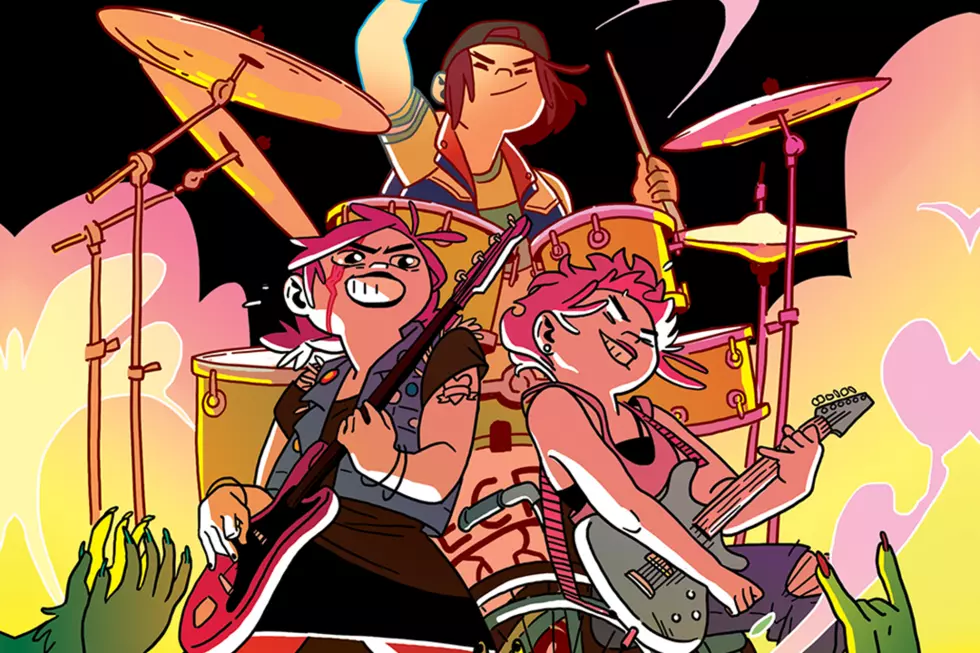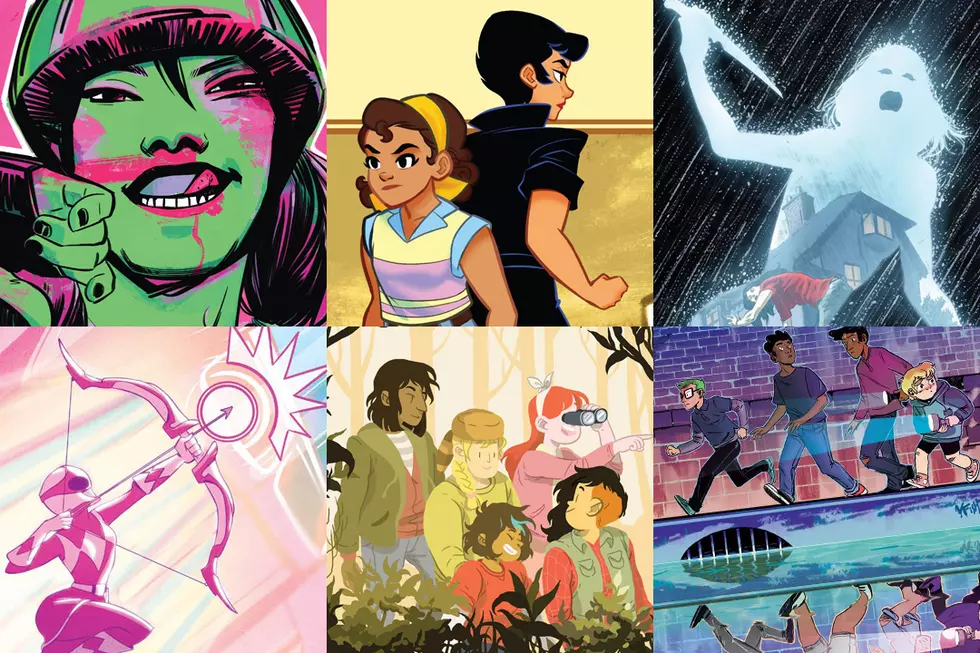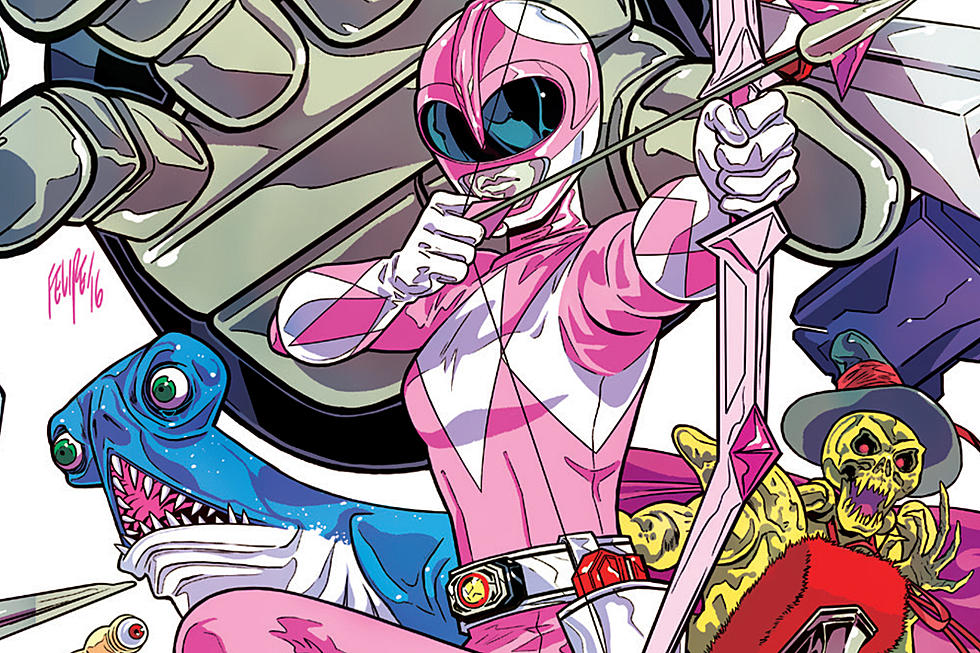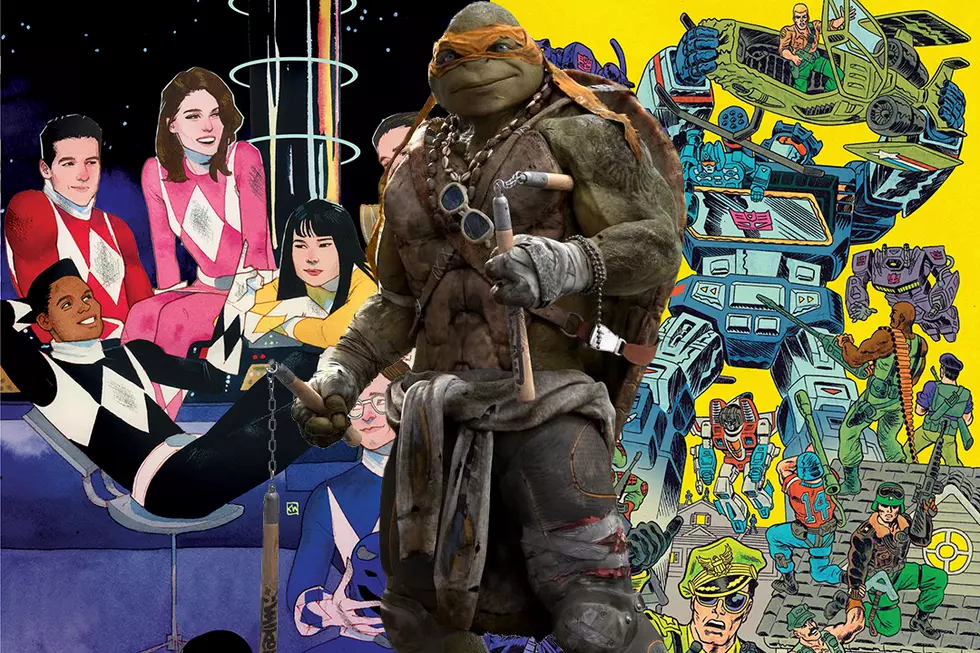
Paid to Draw: Lissa Treiman Talks ‘Giant Days’ and Disney Animation
Animator and artist Lissa Treiman is about see her first regular comics work published, after working at Disney Animation on movies like Wreck-It Ralph and Big Hero 6. She's teamed up with cartoonist John Allison to bring his webcomic Giant Days to the print comics world with Boom Studios. Treiman's style is charming and dynamic, as befits someone who works in animation, and the first issue of Giant Days is a lot of fun --- even for newcomers to John Allison's story.
ComicsAlliance spoke with Treiman about animation, storytelling, comics, and how she balances all of the above. We also got hold of an exclusive peek at Giant Days #1.
ComicsAlliance: Tell us about your career in animation. How did you get started, and where do you work now?
Lissa Treiman: Well I've always liked drawing. I saw The Lion King in theaters when I was nine, fell in love with it, and for the first time I put together that I could use drawings to make movies. I attended CalArts in the Character Animation department for four years, made four short animated student films --- two of them are unwatchable, two of them are... almost watchable --- and graduated in 2007. While I was in school I did two summer internships up at Pixar, both for story, and that's what really helped me find my focus in storyboarding.
Disney called me... literally hours before my college graduation ceremony and offered me a place in the training program --- I think the official name is the Apprenticeship Program now? --- and i was hired on full time out of that. I've been with Disney Feature Animation for almost eight years now. My screen credits (woohoo!) include Tangled, Wreck-It Ralph, and Big Hero 6.
CA: What do you enjoy about working in animation?
LT: I guess the simplest answer is I just like animation! I'm one of the legion of adults who never stopped watching cartoons, 'cause cartoons are rad. From an artistic standpoint, I like that it's drawing with the added dimension of movement and sequential storytelling. I like it when people are able to stylize not just drawings, but the movement of those drawings as well. Animation itself can be incredibly expressive and beautiful, and as a medium for storytelling you're basically unlimited in what you can do. I like being a part of that process. Oh, and I get paid to draw. Like, as a job. That's pretty cool.
CA: You get asked a lot on your blog for advice about breaking into Disney Animation, or just how to do what you do. What’s your top tip for folks who want to break in?
LT: I could talk... a lot about this, because I think it's a more complicated question than it seems. I'll try and keep it short.
I think the biggest, broadest bit of advice I can give is: figure out what you want to do. Animation is a big field. Do you want to animate? Or storyboard? Or design? Or model? Or rig? Or do lighting or layout or editing or... the list goes on. Figure out what you want to do, and work hard to do it as well as you can! Develop your own voice. Being a master of the Disney "house style" won't necessarily get you a job; we want to see new ideas! What are you bringing to the table. If you put your focus on what you want to do before worrying about where you want to do it, you'll find your voice.
As a student applying for a job, there's this powerful inclination to sell yourself as a Jack-of-all-trades. Jobs are scarce, so you want to cast a wide net and present yourself as super-employable. I totally get that. But when a story artist, for example, looks at your portfolio and sees a lot of design work, the first thought is, "Is story where this person really wants/needs to be?" and you don't want that. If you really feel the need to cast a wide net, put together a different portfolio for each skill you want to showcase. I know this takes a lot of time, but a focused portfolio will let your specific strengths come through much louder and clearer.
CA: What appeals to you about doing comics in addition to animation?
LT: As a kid, animation was my first love and comics were my second. Growing up I always figured it would be one or the other. I went to school for animation, and once I discovered a love of storyboarding and realized that it was a viable career path... that's where life took me! I have no regrets, but I've always had comics in my brain, so when the opportunity arose to work on Giant Days I hurled myself at it.
CA: Do you feel that understanding storytelling for animation has helped you with drawing comics?
LT: Absolutely. I've actually been trying to wrap my brain around this comparison for a while, because I think it's interesting. A lot of any kind of visual storytelling is figuring out how to convey the most information in an often limited amount of space, and to do it in an entertaining/aesthetically pleasing way. So a lot of that kind of problem solving crosses over. Really understanding composition factors in as well, not just "fitting characters in a panel," but how different compositions convey different moods, and how one composition will flow into the next.
It's not exactly the same set of skills, though. In storyboarding you're composing within a relatively standard screen size and it's easy to get used to that; comics panels can really be anything, so that's an added thought process. Not just "what's the best composition for this panel" but "what's the best composition of panels on this page" (for the record John has been a huge help in this regard). A long rectangular panel, or a short square panel or a full splash page all evoke different emotions! So you've got to know how to use that space effectively.
In storyboarding we're also afforded the luxury of having several panels to convey one idea. Panels are at more of a premium in comics, so what I could spend several shots and half a dozen panels on in a storyboard might only get one panel on a page of a comic. There's that problem solving I was talking about. I find I've learned a whole lot working on Giant Days, and it's been nice to be able to flex some related-but-different artistic muscles.
CA: How do you balance a full time job and drawing comics? Any time-management tips?
LT: Hahaha man, if I'm totally honest, this had me a little worried when I first accepted this job. And it is a job; I've been careful not to refer to this as something I'm doing "on the side," because it is easily a full. time. job.
I found compartmentalizing the two jobs helped me organize and focus my work; Giant Days stays at home, and animation stays at the studio. Ultimately the balance wasn't hard to find... but it means I am very busy. Basically, comics are my nights and weekends, with a day or two factored in to give myself a break after each issue. Story artist by day, comic artist by night, horrible posture full-time!
It also helped that Boom was (and continues to be) very good about working with me, helping set deadlines that are realistic for both of us. This is work I really want to do, I'm pleased with the work I've done, and the response so far --- and at the time of writing this the first issue isn't even out yet --- has been incredibly positive, so all of that has been amazing fuel as well.
Time-management tips? Most importantly, know yourself and how fast you can work without sacrificing quality (or health, sanity). No matter how amazing the project, don't feel pressured to take on work you can't handle. I wouldn't have taken this job if I didn't think i was up for it; the limited run of the series also made it more realistic for me. It's okay to push yourself a little, but you don't want to hurt yourself. Even as an artist, overworking yourself can mean putting yourself out of commission (carpal tunnel anyone?), in some cases, forever. I listen to my body and take lots of little breaks. Take care of yourself, artists!
CA: Have you drawn comics prior to Giant Days?
LT: Nothing on this scale! I've contributed short comics to two anthologies with fellow Disney story artists ("What is Torch Tiger?" and "Where is Dead Zero?"), and I've done some comics for myself (mostly diary comics) that I put online from time to time. This is my first, big, widely published work.
CA: What sort of aesthetic are you bringing to Giant Days?
LT: I feel like John's style sets the table for a degree of zaniness that I'm glad to be able to work with. His style is lighthearted with a cool factor and a bit of an edge, and while I'm most definitely not attempting to ape his drawing style, I like to think I'm bringing that vibe with me. People hear "Disney artist" and they might think "princesses with big eyes," but they'd be surprised at the range of personal styles behind the scenes here. I could list my artistic influences, but... it's a long list. A lot of comic artists on that list.
CA: Giant Days is a project that was originally a webcomic that writer John Allison also drew. Are there challenges and/or benefits in working with someone who is both a writer and artist?
LT: It's all benefits! John is obviously a very visual thinker, and his scripts definitely reflect that. Even though he's not drawing the comics himself, it's clear he sees a version of them in his head; he even provides rough panel arrangements for each page.
It's been made very clear to me that these are only suggestions, but they fit so naturally with my own visualization of the script as I read it that I've rarely had cause to alter them. Not to mention it's a huge time-saver, and lets me put that much more focus on the actual content of the panels. I find I really enjoy working collaboratively, especially when i can have a collaborator like John.
CA: Is it difficult coming onto a project that’s already established? Or does it make things easier?
LT: A bit of both? Obviously, there's the pressure to do right by these characters and make them feel consistent. But --- and this is where it's easier --- I've been reading John's various comics for... dang, over a decade now? So I feel pretty familiar with his story-telling sensibilities. I feel like I already know these characters, so that makes getting into their heads surprisingly easy.
Esther in particular; she was in high school in Scary Go Round, so now it's like I'm watching her grow up. I'm helping her grow up! Like John has lent me his children and I get to raise them for a little while. I'm just trying to raise 'em right!
CA: If readers have enjoyed the Giant Days webcomic, what can they expect from the print comic?
LT: John's fantastic writing is at the heart of this thing for sure, so that should feel very familiar to people. Visually i'm bringing something a little different, but I think my drawings and John's words jive really well together.
CA: What about folks who haven’t read Giant Days before? What can they expect?
LT: They should be able to dive right in without feeling like they're missing anything. Hopefully this is a shiny new and great bunch of books for them! A solid mix of grounded and cartoony, with great characters. It's kids in college, which is a nice nuanced cross-section of coming of age. They know some things, but not as much as they think. Most of us have either been there or will be there before we know it, so there's a lot to relate to.
CA: Do you plan to do more comics after Giant Days?
LT: A big part of me would absolutely love to. Another, equally big part of me finds working two jobs exhausting. But drawing this comic has definitely confirmed and strengthened my life-long love of the comics medium, and I don't think i could say goodbye to it if I tried. So while there are no concrete plans just now, I'm fairly certain that yes, in time there will be more comics!
More From ComicsAlliance

![Oni Celebrates Queer Supernatural Adventure With Covers For Sarah Graley’s ‘Kim Reaper’ #1 [Exclusive]](http://townsquare.media/site/622/files/2017/01/KIMREAPER-1-FEATURED.jpg?w=980&q=75)


![Thin Lines, Loads of Madness: John Allison On Revisiting ‘Bad Machinery’ From The Start [Interview]](http://townsquare.media/site/622/files/2016/11/BMACHV1-PE-COVER-WEB.jpg?w=980&q=75)




